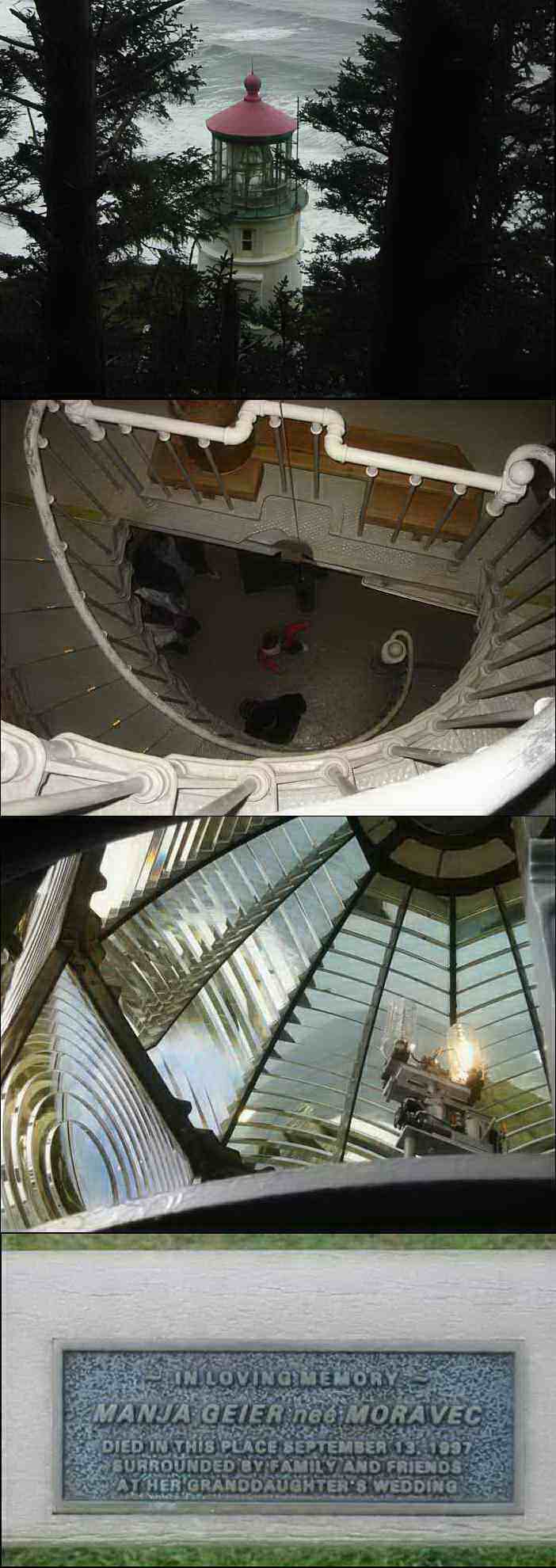Day 3: Tripping the Lighthouse Fantastic
The weather, after Saturday’s stunning summer preview, has turned decidedly.. changeable. Meaning, it changes every 5 minutes or so. It’s beautiful and fascinating to watch from our heated and well-caulked redoubt, but tougher to deal with if you have designs on vigorous physical activity.
We have a couple of short hikelets among our favorite things to do here that take advantage of breaks in this sort of weather, and we did one of them Monday. It starts in a beachside campground, meanders for a mile or so on a wide, sandy beach, heads inland through salal and spruce forest, climbs a 700-foot headland ridge, then drops down to one of the most scenic lighthouses I�ve ever seen. The picture attached to the Road Trip entry below looks back at the beach/starting point of this hike from the headland.
When we arrived at the lighthouse, we saw that it was open for tours. We took the tour last year, and weren�t inclined to do so again, but one of the volunteer guides, a gentleman about 60 � 65, was hanging around outside and engaged us in conversation immediately. It looked like a pretty slow day for him, and when he asked us if we�d like the tour, we felt like we�d be disappointing him mightily if we refused, so up we went.
The lighthouse was built around 1890 using materials hauled up by ship from San Francisco - there was no coast highway at that time. It was fitted with the Fresnel lens shown below, and was fired by kerosene. It revolved using a grandfather-clock-like mechanism and a 200-pound weight. It required 3 keepers, all part of a federal lighthouse service, to reset the weight and replenish the kerosene every 4 hours, plus keep it spotlessly clean. It was electrified in the late 30s, and now is completely automatic. The keepers are long gone, and their former residence is operated by the National Park system as a bed & breakfast.
Lighthouses themselves are now more or less an anachronism, now that most vessels are fitted with GPS and other guidance gear, and you may have read that many of them have been decommissioned and are being given away to municipalities and charitable organizations.
Our guide was part of a retired husband and wife team who spent a couple months each year volunteering with the park service, and had done similar duty at a number of other little museums and monuments. He ventured well beyond lighthouse lore, and we learned, for instance, that some Japanese submarines that patrolled the Pacific coast during WWII actually carried disassembled float planes, which they could launch for sorties such as dropping incendiary bombs in an attempt to start forest fires. Apparently there is a monument to such a mission near Brookings, OR, the dedication of which was attended by the Japanese pilot and submarine captain. We eventually extricated ourselves, signed the log book and hiked back over the ridge, hoping to reach the beach before the tide completely engulfed it..
A successful afternoon � we took very little rain and got 5 -6 miles of pleasant hiking in the bargain. In the final frame of the picture below is an epitaph of sorts which we found attached to a bench in front of the lighthouse. It�s a perfectly succinct telling of a story, needing no further embellishment (Click to enlarge).

